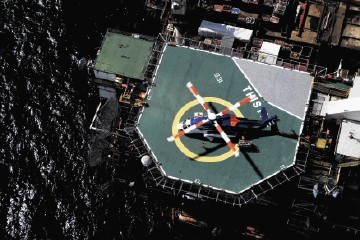
North Sea oil production slumped by nearly 11% in the third quarter of 2014.
New figures showing the sharp drop in output coincide with growing fears about low oil prices and their impact on the future of the offshore industry.
One expert has warned the offshore sector is “close to collapse” because of the current low Brent oil prices, which yesterday rose slightly to about $62 per barrel.
But a leading economist, John Hawksworth at professional services group PwC, had a different view, saying lower oil prices would have a positive net effect on the UK economy.
The gloom surrounding the oil and gas industry
and its prospects darkened when Robin Allan, chairman of independent explorers’ association Brindex, delivered his “close to collapse” verdict.
Mr Allan, who is also a director at Premier Oil, said: “It’s almost impossible to make money at these oil prices.
“It’s a huge crisis. This has happened before, and the industry adapts but the adaptation is one of slashing people, slashing projects and reducing costs wherever possible, and that’s painful for our staff, painful for companies and painful for the country.
“In terms of new investments, there will be none. Everyone is retreating and people are being laid off.”
But Mr Hawksworth said it was good for the economy, adding: “An oil price fall acts like a tax cut … but a particularly favourable one in the sense that the burden of lost revenue is primarily borne by the major oil producers such as the Opec member countries and Russia.
“The UK is still a significant oil producer but we are now a net oil importer. There should be a net benefit to our economy as a whole, even if there are some losers in the UK oil and gas sector, and in particular places like Aberdeen.
“In our shale oil report from February 2013, we estimated that a $50 fall in the oil price, if sustained, could lead to the level of UK GDP (gross domestic product) being around 3% higher in the long run.
“Of course, the recent fall in prices may not be sustained, in which case the net GDP gain would be less, but it gives some idea of potential orders of magnitude.”
Recommended for you
